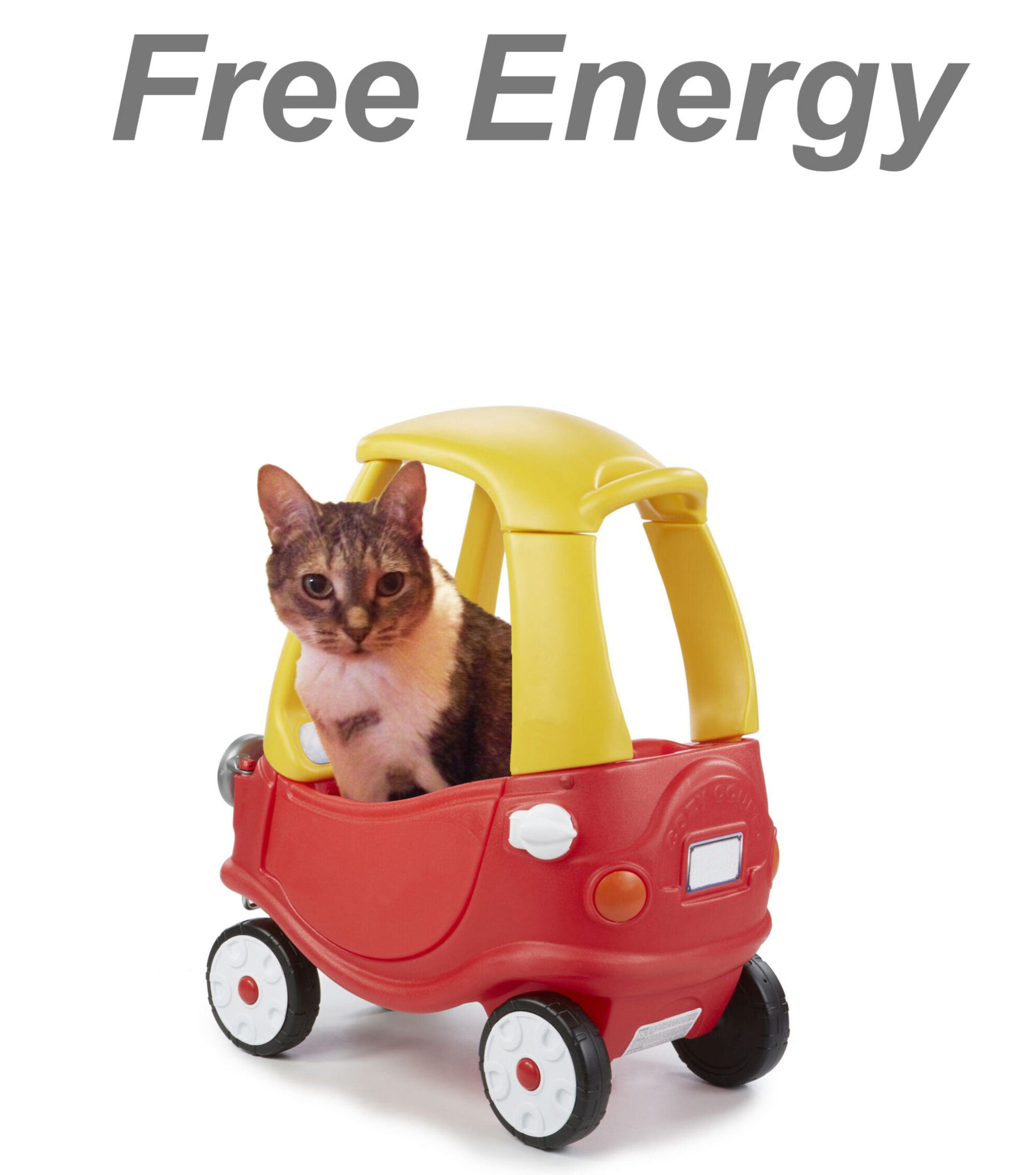Welcome to the Free Energy project, an open educational resource textbook for Physical Chemistry I & II!
Largely focused on undergraduate (junior to senior) level thermodynamics and quantum mechanics, Free Energy is a community-wide effort to reduce the burden of post-secondary education by eliminating the cost of college textbooks. Eight years in the making thanks to support by the University of Illinois Chicago, the textbook has all original content including problem sets. ISBN 979-8-218-34940-0.
Download the latest copy here. Included under the downloads tab are the text’s original figure files (tiff and Illustrator/Photoshop formats). Also the .docx is available (note: it’s a very large file).
Our program is unique as we allow you, the adoptee, to modify all the original source material at will to suit your needs. Note, we had a major revision posted Jan 2025 with extra proofs for a few select quantum mechanical problems.
Homework answer keys are available! Please contact Prof. Snee, who will verify your credentials and then forward requested materials to your university’s sponsored email.
Table of Contents
Chapter 1: Gas Equations of State
1.1 Units and the Perfect Gas Law
1.2 Van der Waals Equation
1.3 The Virial Equation
1.4 Phase Transitions
1.5 Corresponding States
ProblemsChapter 2: Energy
2.1 Changes of energy: work and heat
2.2 Work, and the Inexact Differential
2.2 Reversible and Irreversible Transitions
2.3 Exact and Inexact Partials and Euler’s Test
2.4 Internal Energy (U) and the Equipartition Theorem
2.5 Heat Transactions, Heat Capacity, and Adiabatic Systems
ProblemsChapter 3: Enthalpy, Legendre Transforms, and Thermodynamic Proofs
3.1 Enthalpy and Changing Functions
3.2 Heat Capacities
3.3 Natural Variables and Legendre Transforms
3.4 The Joule and Joule-Thomson Experiments
ProblemsChapter 4: Entropy and the 2nd Law
4.1. Introduction to Entropy
4.2 Entropy Inside and Outside: The 2nd Law and the Clausius Inequality
4.3 Calculating Entropy Changes
4.4 The Car Engine, and the Carnot Cycle
4.5 Maxwell Relationships
ProblemsChapter 5: Helmholtz and Gibbs Energy
5.1 Helmholtz Energy (and The Clausius Inequality Pt. II)
5.2 Gibbs Energy
5.3 What is Free Energy? Pt. I
5.4 Calculations: Numerical and Derivations
5.5 Advanced Derivations: Maxwell Relationships II
ProblemsChapter 6: Chemical Thermodynamics
6.1 Entropy and the 3rd Law
6.2 Energy, It’s All Relative
6.3 Enthalpy and Gibbs Energy of Formation: Hess’s Law examples
6.4 Chemical Reactions and Chemical Potential
6.5 Equilibrium Constants
6.6 What is Free Energy? Pt. II
ProblemsChapter 7: Solutions and Colligative Properties
7.1. Partial Vapor Pressure
7.2 Partial Pressure Measurements and Raoult’s Law
7.3 Excess Functions and Ideal Solutions
7.4 Henry’s Law, Activity, and Ideal-Dilute Solutions
7.5 Colligative Properties
ProblemsChapter 8: Phase Changes
8.1 The Gibbs Phase Rule
8.2 Entropy is the Reason Phase Changes Occur
8.3 Other Examples of Phase Changes
ProblemsChapter 9: Surfaces, Interfaces and Electrochemistry
9.1 Surfaces and Surface Energy
9.2 Surface Expansion Work
9.3 Electrochemistry and the Nernst Equation
ProblemsChapter 10: The Kinetic Theory of Gas
10.1 Probability vs. Probability Distribution
10.2 The Boltzmann Distribution
10.3 Average and RMS Velocities
10.4 Average Relative Velocity and Collision Frequency
Problems
AppendixChapter 11: Boltzmann Statistics
11.1 The Blackbody Radiator
11.2 Heat Capacity of Solids
ProblemsChapter 12: Introduction to the Schrödinger Equation
12.1 Einstein’s Theory of Relativity
12.2 The Schrödinger Equation
12.3 Born Interpretation
12.4 The Eigenvalue Equation and Operators
12.5 The Freewave Potential
ProblemsChapter 13: Potential Surfaces and the Heisenberg Uncertainly Principle
13.1 Potential Energy Surfaces
13.2 Complex Potential Energy Surfaces: Vibration
13.3 Uncertainty and Superposition: Wavefunctions as Waves
13.4 Perturbation Theory
Problems
AppendixChapter 14: Multidimensional Quantum Mechanics and Rotation
14.1 Multidimensional Free waves and the Particle in a Cube
14.2 Rotational Quantum Mechanics: Introduction
14.3 Wavefunctions
14.4 Spin Angular Momentum
14.5 Angular Momentum Operators
14.6 Addition of Angular Momentum and Term Symbols
ProblemsChapter 15: The Hydrogen Atom
15.1 The Bohr Model
15.2 The Hydrogen Schrödinger Equation
15.3 Hydrogen Radial Wavefunctions
15.4 Spin-Orbit Coupling
15.5 Spectroscopy
15.6 Multielectron Atoms and Exchange
Appendix
ProblemsChapter 16: Kinetics
16.1 What is a Reaction Rate?
16.2 Rate Laws and 1st Order Kinetics
16.3 Rate Laws and 2nd Order Kinetics
16.4 Consecutive Reactions
16.5 Reaction Mechanisms
16.6 Biological Kinetics
Problems
Email Preston T. Snee with comments or questions.
